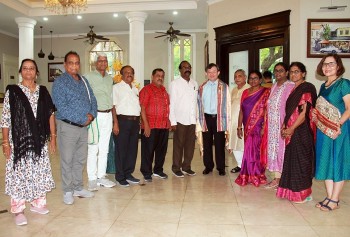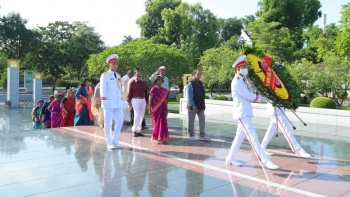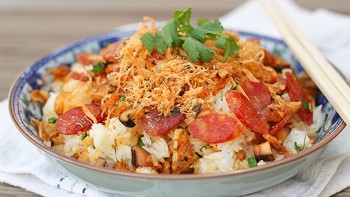INDIA – THE MOST MYSTERIOUS LAND ON THE PLANET THAT IS YET TO BE EXPLORED
|
It now takes only 4 hours to fly from Vietnam to India thanks to the new direct air routes launched by airlines of the two countries. This is a vast country, extremely diverse, culturally rich, and will not disappoint those who love to explore new things. |
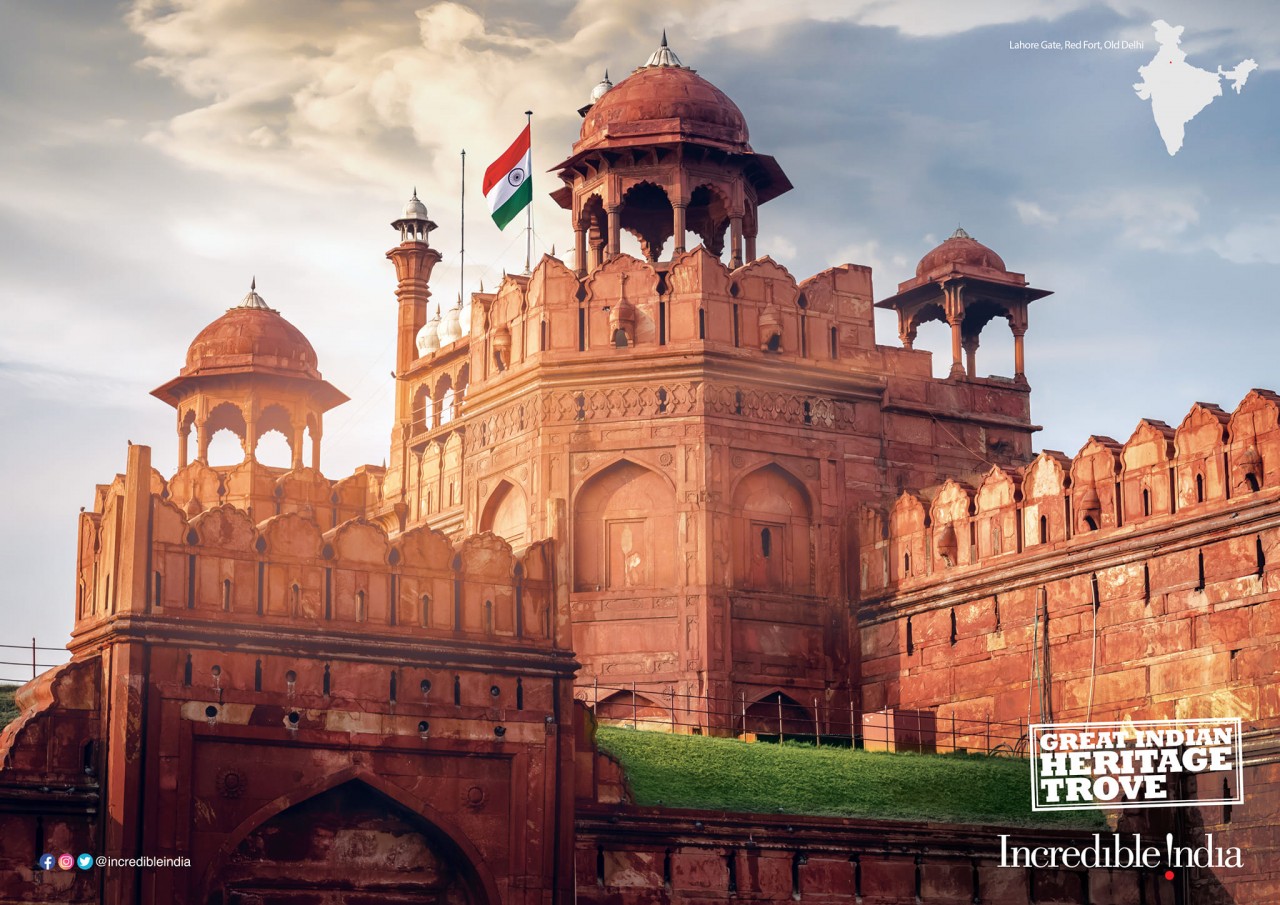
|
The first thing that catches the eye of anyone who comes to India for the first time will certainly be ancient structures, not only in the capital New Delhi and its surrounding areas but also scattered throughout the country. In India, the most famous monuments are the masterpieces of Mughal architecture such as Humayun's Tomb in New Delhi and the Marble Tomb of Taj Mahal, considered one of the Seven Wonders of the World at Agra which is 200 km from the capital, built by Mughal emperor Shah Jahan to honor his love for his late wife. There are also many magnificent forts and palaces such as the Red Fort in New Delhi, Agra Fort, Jaisalmer Fort, and Amber Palace in Jaipur, all of which are destinations located in the area not far from the capital well worth a visit. |
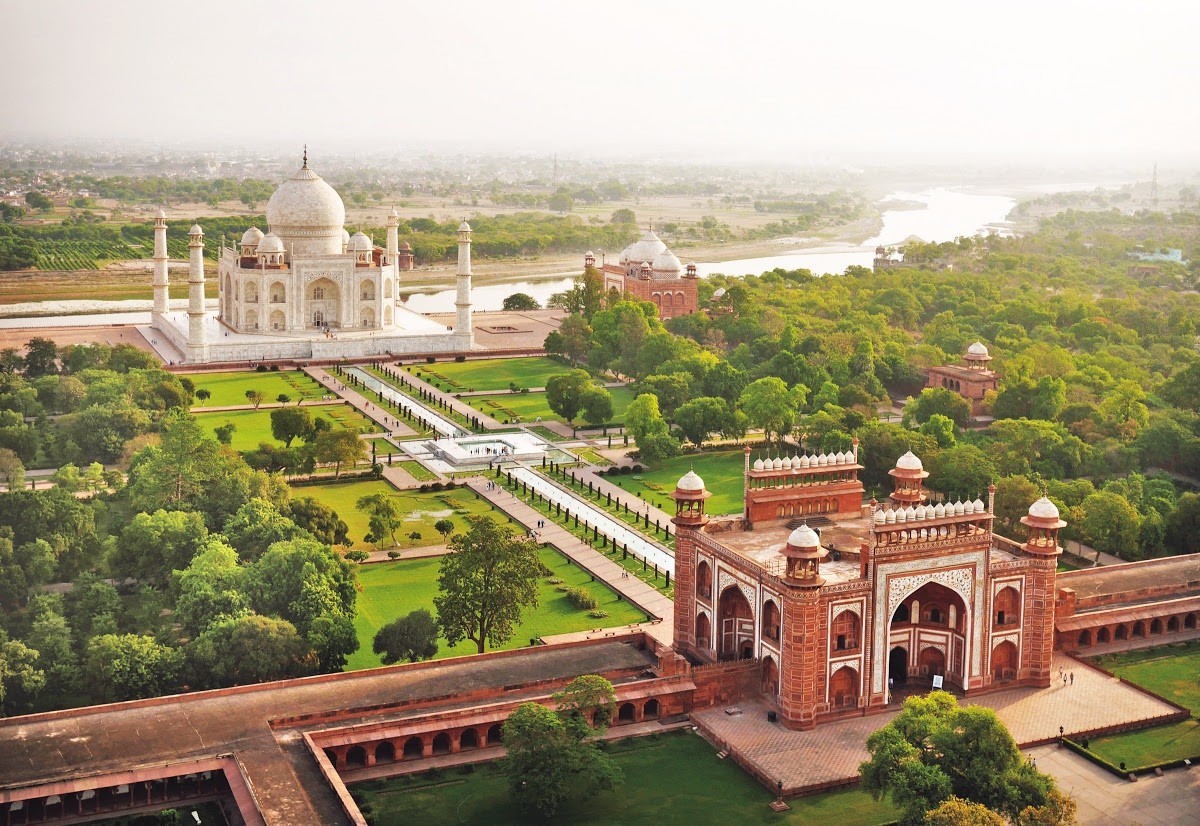 |
|
Ancient architecture is reflected in most of the temples, richly decorated with sculptures of gods, dances and epic stories. In New Delhi, the most famous is the Akshardham temple, a complex of Hindu architecture with thousands of exquisitely carved white stone statues. Other must-visit ancient temples are the Temple of the Sun in Konarak, Orissa, and the temple of Khajuraho, a UNESCO site in central India known for its male-female relationship sculptures. In Southern India, the most famous is Tirupati Balaji Temple, the richest Hindu temple in the world, with a total net worth of US $27.56 billion. This temple, dedicated to Lord Vishnu, attracts around half a million pilgrims every day during festivals, making it India's most visited Hindu holy place. |
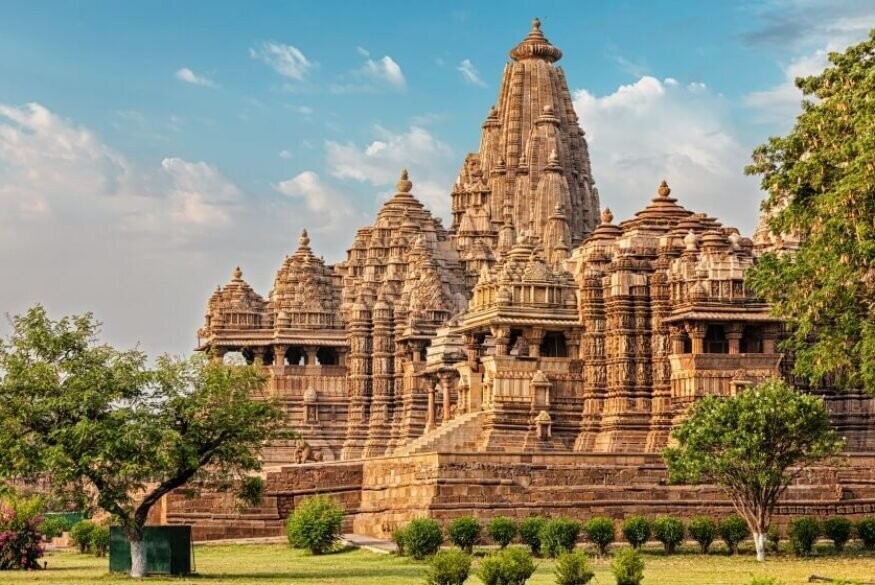 |
|
A famous Sikh monument not to be missed is the Golden Temple located in the state of Punjab, inlaid with pure gold donated by Sikhs. Also worth seeing are stepwells, such as the "Queen's Step Well" Rani ki Vav in Patan, north of Gujarat, which has been designated a UNESCO World Heritage Site. |
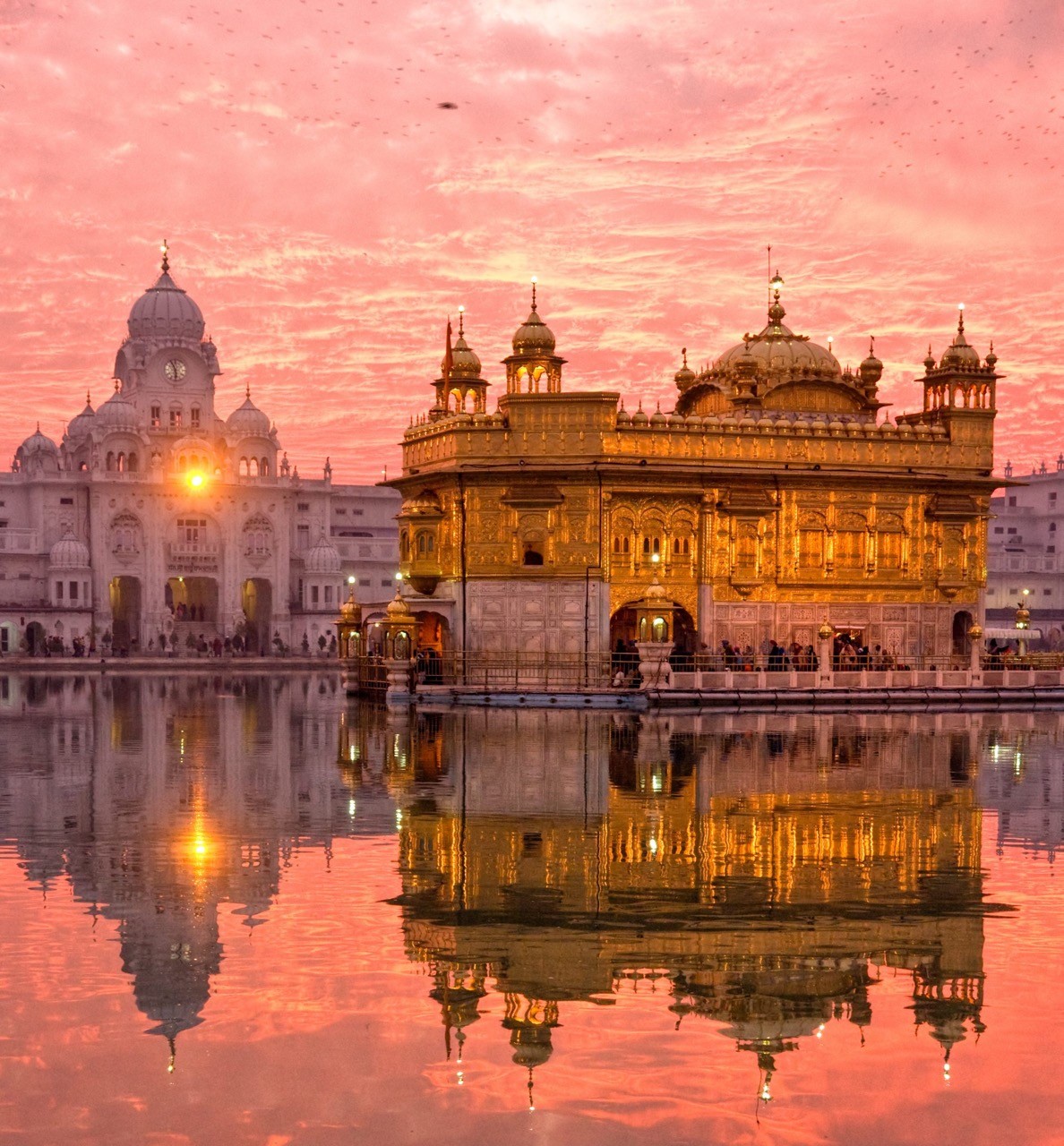 |
|
For Vietnamese Buddhists, in addition to worshiping in the Four Holy Places including Bodhgaya, where Buddha attained enlightenment, Varanasi, where Buddha preached, Lambini (Nepal), where Buddha was born and Kushinagar, where he died and attained final nirvana, they cannot ignore other masterpieces of Buddhist architecture such as the complex of Buddhist monasteries carved into the rock in Ajanta and Ellora areas near Mumbai or the Great Stupa of Sanchi erected by Emperor Ashoka near Bopal, Central India. |
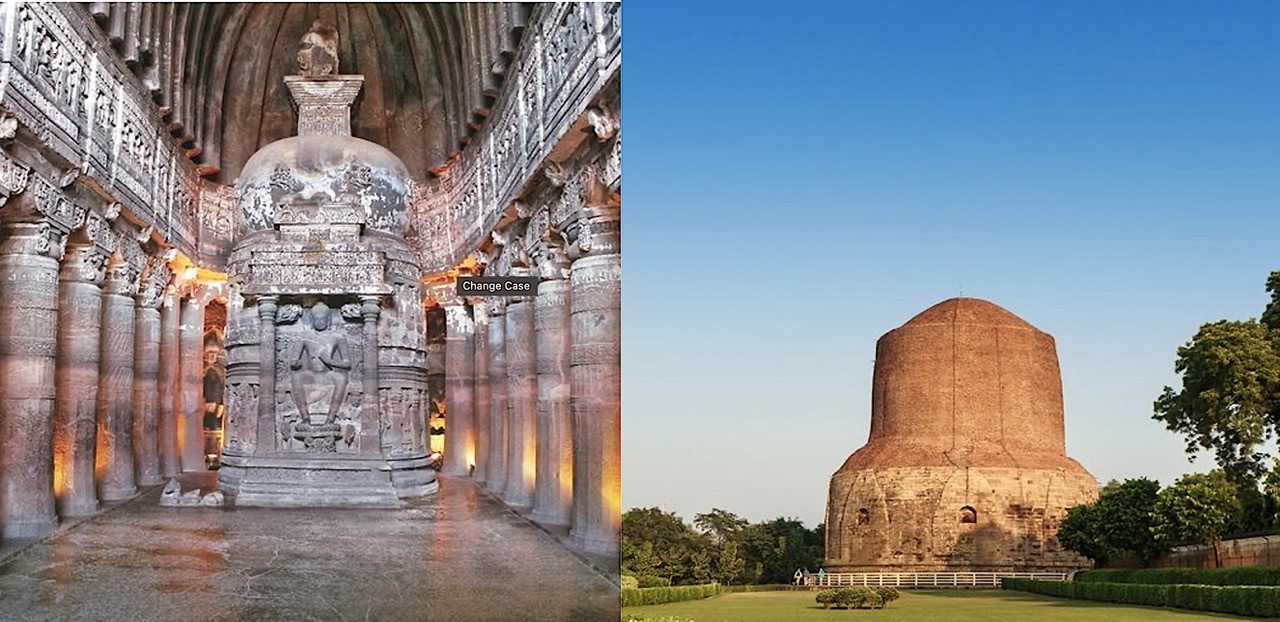 |
|
What time of year is the best weather to visit India? In general, India is very hot in summer, in both the South and the North, although it is cooler in the Central Highlands such as Pune and Bangalore. Therefore, the best time to visit India is during winter, from October until the end of March. This is also when vibrant festivals take place all over India, starting with the Dussehra Festival in October when plays are performed to reenact the story of Ramayana, and followed by the Diwali Festival of Lights which is celebrated as grandly as the Vietnamese Tet holiday, when colored lights are decorated everywhere and fireworks are shot up in the sky, and people are excited to give each other gifts. Other popular traditional festivals celebrated across much of India in February are Vasantpanchami in honor of Sarasvati, the goddess of learning, and Holi Festival in March when caste is cast aside and festival-goers throw color powder at each other. During festivals, women often paint henna on each other's skin, not only for beauty but also for spiritual meaning, sending best wishes to each other. Winter is also an ideal time to explore hard-to-reach states in summer like Rajasthan, where there are very special camel festivals in the desert. Winter is also the time when you can sip a cup of milk tea called "Chai", sold in every corner of India, helping you warm up in cold weather. Indian cuisine, in general, is very spicy and every dish has a very specific masala smell, which is difficult to enjoy right away for Vietnamese and foreigners in general, but if you want to explore, you can start trying a simple, easy-to-eat and very tasty dish: “Nan” made with white flour, baked in the oven, and brushed with a layer of very fragrant onion butter, served with a sauce made of red beans called Dal. You can expand your Indian culinary explorations with other easy-to-eat dishes like Indian fried chicken or potato pies. Once you start to fall in love with Indian food, you can explore Indian curries, cooked with lamb or paneer (i.e. young cheese). These dishes are rich in nutrients and have healing properties. When introducing Indian desserts, one must include cakes made from beans and milk, like Vietnamese mung bean cakes but sweeter, milkier, and sometimes even inlaid with a thin layer of sparkling gold or silver which is great for detoxification. When exploring India, it is impossible not to note some of the customs of the Indians. In general, Indians are very friendly and approachable, if you get lost, they will show you the way. The common greeting is namaste and more formal namaskar; if you want to be more elegant, add the word Ji at the end of the greeting. Shaking hands and giving gifts or anything should always be done with the right hand, the left hand is only used for cleaning. Otherwise, simply fold your hands in front of your chest and slightly bow your head, especially when meeting older people and women. Taking off shoes before entering places of worship is also a mandatory practice as they will bring dirt to a clean and sacred environment. The top of the head is considered the most important part of the human body. Touching the top of someone's head is considered rude and insensitive. This is especially true of babies, children, the elderly, religious leaders, or statues of gods. Feet are said to be the 'dirtiest' part of the body so never let the soles of your feet point at another person, at a temple, or at a god. To avoid this, sit cross-legged or kneel on the floor while in a temple or sanctuary. If you must stretch your legs, stay away from sacred symbols. Never turn your back on a religious statue. If giving gifts, avoid wrapping them in white or black paper, because black represents anger, evil, and negativity, while white is for funerals. Instead, choose red, blue, or green, and avoid gifts made from leather, especially pig skin. An Indian gesture that is very different from other parts of the world is the head bobble, which means agreement, thanks, or understanding, depending on the context of the conversation; it does not mean denial. If you want to get acquainted quickly, talk about baseball (Cricket), because this sport is very popular in this country. When parting, “goodbye” is often considered too definitive, so instead of saying it, Indians often say “See you later.” Do not be surprised to see cows roaming on the street, even if they block the traffic, you must wait for the cows to pass. Cows in India are worshiped as a generous symbol of Mother Earth, providing milk to sustain life. As a result, killing cows, or eating beef, is considered illegal in some states. These are just a few things to discover and keep in mind when traveling to India. No matter how many days, no matter how many times you visit India, it will never be enough. Do not hesitate any longer, pack your backpack and start your journey to discover the only remaining mysterious land on this planet. |
|
Ton Sinh Thanh, Former Ambassador of Vietnam to India |
|
